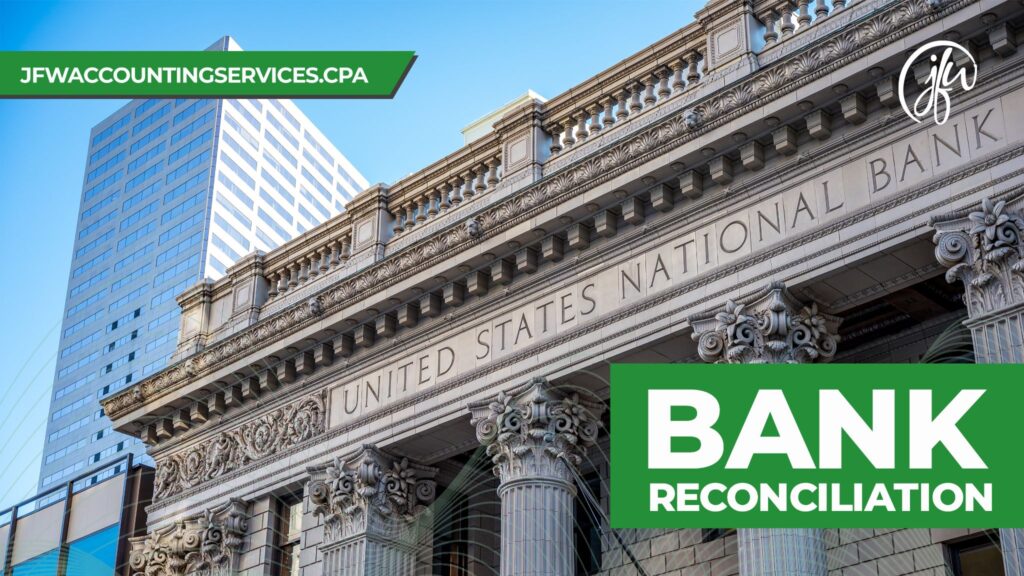Having an effective accounting process in your nonprofit organization allows nonprofits to stay transparent and accountable. Keeping track of daily financial transactions and producing monthly and annual reports is mandatory for organizations that want to remain compliant and reach their goals.
The accounting process at every organization is unique in the way tasks are delegated and facts are reported, but one process that remains consistent is bank reconciliations. In this article, we discuss bank reconciliations and why they are important to your organization.
What Is A Bank Reconciliation Statement?
The definition of reconcile is to “compare one financial account to another and make them consistent.” In accounting terms, reconciliations are no different. Organizations reconcile financial accounts, including the GL accounts that represent the items on the balance sheet or Statement of Financial Position. One of the accounts that are reconciled most often in nonprofit accounting is the bank account.
Bank reconciliations allow users to see that the cash represented on the financial statements matches the cash that is physically in the bank account. Completing bank reconciliations is an important part of the monthly accounting functions and a report showing that all transactions are accounted for is typically included in a monthly financial packet when prepared by the organization.
While bank reconciliations are generally performed at the end of accounting periods, the bank can be reconciled at any time.
The report that summarizes both the activity at the financial institution and in the nonprofit’s general ledger is called a bank reconciliation statement. The statement gives the company’s bank balance as of a certain date. It is not unusual for the balance in the nonprofit’s checking or savings account to differ from the balance showing in the financial records. This is typically caused by uncleared checks, deposits in transit, or other verifiable occurrences.
The purpose of the bank reconciliation statement is to show the reason for those differences. Bank reconciliation reports explain variances between the source (in this case -the bank) and the organization’s books. A properly executed bank reconciliation statement allows nonprofit CFOs, leaders, and funders to quickly assess how much money the organization has.
Why Bank Reconciliations Are Important
There are many reasons organizations prepare reconciliation statements. Perhaps one of the most important reasons is to verify that the information on the financial records is accurate. Other reasons for preparing a reconciliation statement include the following.
Identify Errors And Build Confidence
The bank reconciliation process isolates any accounting errors during the period and allows the finance team to correct or explain the errors. Some common errors found during the accounting process include:
- Double payments to vendors
- Revenue that was collected and not recorded
- Interest income is not accounted for in the accounting software
- Petty cash use is not noted on the financial records
- Paper checks that have not reached their intended destination
By reconciling the bank accounts on a regular basis, the accounting team can identify and correct those errors. Making sure there are no missed transactions or accounting errors in the cash accounts gives nonprofit leaders the confidence they need to make informed decisions about the nonprofit’s financial position today and the organization’s next moves.
Internal Controls
Having strong internal controls in place gives nonprofit entities the tools they need to prevent fraud, comply with state and federal regulations, and present verified financial information. The bank reconciliation process is often addressed when implementing internal controls because cash accounts are one of the first assets an organization considers when protecting itself from fraud.
Bank reconciliation statements should be prepared or reviewed by an individual that is not the same person writing checks and making deposits. This second set of eyes helps to reduce the likelihood of theft and protects the entity from a short-term human resource issue becoming a long-term catastrophe.
How To Prepare A Proper Bank Reconciliation Statement

There is no “right way” to reconcile a bank account or prepare a monthly financial report. The bank reconciliation statement is correct if every transaction recorded on the general ledger matches a transaction that occurred at the bank. However, the methods organizations use to prepare the statement can differ significantly.
Automated Reconciliations
Most modern nonprofit accounting software includes a function for bank reconciliations. Within the software, users can manually tick and tie each transaction and prompt the software to generate the report. Some software, like Sage Intacct, even automates the process further by importing the transactions from the financial institution and comparing them to the transactions entered in the software.
Internal Preparation
Some organizations prefer to manually prepare their bank reconciliation reports. This typically includes one individual in the accounting department sitting down with the month-end bank statement and the recorded transactions to manually confirm each entry matches an entry on the other document. If you manually prepare these statements, just remember to have a different employee complete the reconciliation than the person processing payables.
Third-Party Accounting Support
Connecting with outsourced bookkeeping, accounting, or CFO service is a great way to maximize efficiency and protect your organization from issues like fraud and noncompliance. Third-party accounting services, like those offered by JFW, can include day-to-day accounting guidance or simply be used to prepare monthly financial reports, like the reconciliation statement.
Outsourced accounting can also be used to confirm and issue annual financial reports, like Form 990.
Final Thoughts
The bank reconciliation statement must be an important part of your nonprofit’s accounting functions. The report allows entities to prevent fraud, increase accuracy, make informed decisions, and meet agency requirements.
There are multiple methods you can use to prepare accurate reconciliation reports, including internal preparation, software-assisted compilation, or using a third-party firm like JFW Accounting Services.
Give us a call today to learn how we can partner with your organization to help secure your company’s financial position.

Jo-Anne Williams Barnes, is a Certified Public Accountant (CPA) and Chartered Global Management Accountant (CGMA) holding a Master’s of Science in Accounting (MSA) and a Master’s in Business Administration (MBA). Additionally, she holds a Bachelor of Science (BS) in Accounting from the University of Baltimore and is a seasoned accounting professional with several years of experience in the field of managing financial records for non-profits, small, medium, and large businesses. Jo-Anne is a certified Sage Intacct Accounting and Implementation Specialist, a certified QuickBooks ProAdvisor, an AICPA Not-for-Profit Certificate II holder, and Standard for Excellence Licensed Consultant. Additionally, Jo-Anne is a member of American Institute of Certified Public Accountant (AICPA), Maryland Association of Certified Public Accountants (MACPA), and Greater Washington Society of Certified Public Accountants (GWSCPA) where she continues to keep abreast on the latest industry trends and changes.

